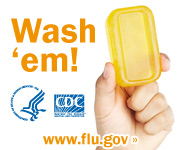 |
| Cornmeal-coated tilapia with couscous, lemony carrots and green beans |
I may not make New Year's resolutions, but that doesn't mean I think my self improvement is done. It's just that I'm constantly reflecting on myself and how I can continue to grow, learn new skills, make smarter decisions, treat people and the planet with respect and be a better person in general. Shouldn't those aspirations guide me every day and not just once a year?
Symbolically I understand the urge to make the annual resolution. New year, new start. And for some people, the grand resolution may inspire great resolve. As for me, it's more effective to think of each day as a clean slate. If one day doesn't work out so well, then the next day I can start over, like Bill Murray in "Groundhog Day." There won't be a dramatic transformation as in "Extreme Makeover." It'll be more like a recipe you're working on. Each time you test it, you tweak it and make little improvements. Eventually you end up with something to feel good about.
Among my ongoing improvements is putting more thought into where my food comes from and the impact on the environment. I know many people are way ahead of me on this, but better late than never, no? Of course, here in the frigid Midwest winter, buying in season and local is a little different than it would be in California, where you'd be able to get produce from within the state, even from a farmers market, at any time of year. My choices are more like apples from two states away or cherries from a continent away. I choose the apples.
At the fish counter, I tend to have a little more trouble. I know I should steer clear of orange roughy and Chilean sea bass (both of which were on ice last week at the supermarket), but is trout okay? Does it matter whether it is wild or farmed, as it does with salmon?
 |
| Canada-farmed rainbow trout pan fried with teriyaki sauce |
It turns out U.S.-farmed tilapia and farmed rainbow trout are good choices, according to the guide. But lake trout could be okay or not, depending on which lake it came from. And Central American-farmed tilapia is supposed to be a good alternative to U.S.-farmed, but Asia-farmed tilapia is not.
I ended up buying farmed rainbow trout from Canada and tilapia farmed in Central America. I didn't really have a recipe for either. I just fried the trout, adding teriyaki sauce toward the end of cooking. The tilapia I seasoned with salt and pepper, dusted with cornmeal and pan fried in a little butter and olive oil. I finished with a squeeze of lemon (I've done lime too) and served it with herbed Israeli couscous, green beans and pan roasted carrots dressed with a lemon vinaigrette (recipe below).
I'm not deluded. I realize that my individual decision to pass up the Chilean sea bass and fry up the trout is not going to save the planet. But as my knowledge grows, hopefully, my improved choices will add up, and I can also help educate friends and family, whose choices will add up, and so on. If I'm successful, we'll maybe help the Earth in our small way, or at least not contribute to messing it up.
Lemony Balsamic-Thyme Vinaigrette for Roasted Carrots
I really think the brightness of this dressing complements the naturally sweet vegetable better than a sugary or syrupy glaze. This makes enough for at least two pounds of carrots.
INGREDIENTS
1 Tablespoons balsamic vinegar
1 Tablespoon lemon juice
1 teaspoon mustard
4 Tablespoons olive oil
1 tsp chopped fresh thyme
1 tsp grated fresh lemon zest
1/2 teaspoon salt (adjust according to preference)
1/4 teaspoon freshly ground pepper
DIRECTIONS
1. Whisk together balsamic vinegar, lemon juice and mustard, then gradually drizzle in the olive oil while constantly beating. Whisk in the thyme, lemon zest, salt and pepper.
2. Spoon about half the vinaigrette over two pounds of roasted carrots. Taste and add more dressing if desired. The dressing can be made ahead, but carrots taste best served right after being dressed.
This also is good for making a roasted carrot and potato salad.




No comments:
Post a Comment